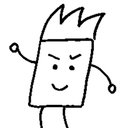Postural tremor in X-linked spinal and bulbar muscular atrophy.
Mots clés
Abstrait
Postural tremor is a common initial symptom in spinal and bulbar muscular atrophy (SBMA), but its pathophysiological mechanisms remain to be studied. This study was undertaken to examine the physiological mechanisms underlying postural tremor in SBMA. For eight patients (36-63 years old) with genetically confirmed SBMA, we recorded surface electromyograms (EMGs) from the forearm muscles and hand movements with an accelerometer (ACC) while maintaining a posture with and without a weight load. We then analyzed their power spectra and coherence. The peak tremor frequency was 6-9 Hz in seven patients and 2-3 Hz in one patient. Oscillatory movements were associated with EMG activity in five patients, but not in three patients. Weight loads and postural changes affected the tremor frequency in all patients. Tremor was classified as "reflex tremor" in five patients and "mechanical tremor" in three patients. These results suggest that peripheral factors play important roles in tremor genesis in SBMA, although its clinical features resemble essential tremor. Subclinical sensory disturbance or a decrease of motor unit numbers might be candidates for such peripheral factors contributing to tremor genesis in SBMA.



